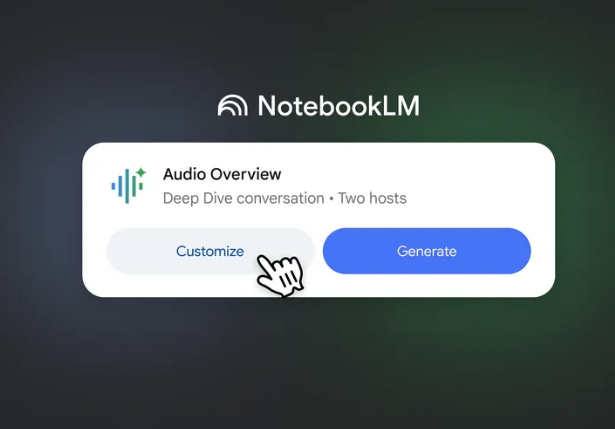Technology
Android 15 brought a swipe-back gesture bug to the Pixel 8 Pro
Android 15 stable is finally available for all eligible Google Pixel phones. Users have been enjoying all the new features of the latest version of the OS for a few days. However, they have also discovered a few issues that require fixing. One of the most annoying bugs in Android 15 is the one that prevents Pixel 8 Pro users from using the swipe-back gesture correctly.
By now, the vast majority of Android users will already be accustomed to the gesture navigation system. While some still prefer the classic bottom navigation bar, using gestures is quite convenient. Additionally, when using gestures, the navigation bar disappears, so you have more usable screen space that was previously unavailable in certain situations.
A bug on Android 15 affects the swipe-back gesture on Pixel 8 Pro units
That said, a bug in Android 15 is impacting how the swipe-back gesture works on Pixel 8 Pro devices. It can be quite frustrating, as it prevents users from going back to sections within an app, returning to a previous screen, or closing certain menus, among other things. According to reports, the issues started right after updating their devices to Android 15. Additionally, the bug primarily affects the right-edge swipe gesture. Swiping in from the left edge still works correctly in most cases.
Interestingly, the issue is not affecting all Pixel 8 Pro units. There are users for whom the gesture navigation system is working flawlessly even on Android 15. However, the number of reports suggests that the percentage of people facing the bug is significant.
Fortunately, there is a workaround that helps solve or mitigate the problem. Apparently, the bug was already present in the Android 15 betas, so it didn’t come as a surprise to many. What is surprising is that it is still present in the stable build.
How to fix the issue
Anyway, to fix the swipe-back gesture bug on your Pixel 8 Pro, you have to go to Settings > System > Navigation mode. Then you just have to set it to 3-button navigation and set it back to gesture navigation. Many people found the problem solved at that point, but if it persists for you, simply restart your phone. It’s noteworthy that the problem may return, but you can just repeat the process.
The workaround has been quite effective while waiting for an official fix from Google. Hopefully, the company won’t take long to send an update where gesture navigation on the Pixel 8 Pro works correctly.
Technology
NYT Crossword: answers for Friday, October 18


The New York Times crossword puzzle can be tough! If you’re stuck, we’re here to help with a list of today’s clues and answers.
Technology
You can stream Assassin’s Creed Mirage on GeForce NOW today

GeForce NOW is one of several subscription services that revolve around gaming that you can throw your money at every month, and it’s because NVIDIA adds games like Assassin’s Creed Mirage that make that worth doing. This week is sort of a big one for the service as there are two or three big games that are being added. In total, there are ten new games joining the lineup, some of them new, some of them not.
Although if you really think about it, any game is new if it’s new to you, right? Whether you’re a new subscriber or you’ve been around a while, there’s nothing quite like picking up a new game and falling in love with it. You can do just that this week with a multitude of options across a handful of genres. Do you like mech games? Good news. GeForce NOW has a new mech game for you to play in the cloud this week.
Are action-adventure titles more your speed? Well, you have options there too. Whatever you like when it comes to games, GeForce NOW has something for you.
Assassin’s Creed Mirage is now playable via GeForce NOW
Assassin’s Creed Mirage is probably one of the best games in the franchise in a while. Taking some of the elements of its recent predecessors and mixing them with the gameplay mechanics from the beloved older titles in the franchise. It’s also considerably shorter than say, Assassin’s Creed Valhalla. So if you want a more condensed experience with an AC game, you should definitely give Mirage a shot.
And now you can do that more easily than ever because you can stream it in the cloud on GeForce NOW. This is for the Steam version of the game, as it was already available to stream if you owned it on Ubisoft Connect. So the good thing about this week’s addition of Mirage is that Steam loyalists who prefer not to stray from Gabe Newel’s digital game haven can play the game in the cloud now too.
Alongside Assassin’s Creed Mirage, GeForce NOW subscribers can also now stream Neva, MechWarrior 5: Clans, A Quiet Place: The Road Ahead, Artisan TD, ASKA, Dungeon Tycoon, South Park: The Fractured But Whole, Spirit City: Lofi Sessions, and Star Truck.

Dragon Age: The Veilguard will be streamable on October 31
Dragon Age fans can look forward to streaming the latest game in the series when it launches later this month. It officially releases on October 31 so there are only a couple more weeks before you can dive into it.
If you haven’t already pre-ordered the game, NVIDIA is offering a pretty sweet deal for members. If you subscribe to GeForce NOW’s Ultimate membership for a six-month subscription, you’ll be given a free copy of Dragon Age: The Veilguard. Now, a six-month Ultimate membership will set you back $99.99. That being said, the standard version of Dragon Age: The Veilguard will cost you $70. So another $30 and you’ll get six months of the best option GeForce NOW offers, and you get the game for free.
This is an even better value for anyone who is planning to pick up the Deluxe Edition or above.
Science & Environment
What will space exploration be like in 50 years?

Day trips to the Moon, living on Mars, space elevators… when it comes to the future of space exploration, some possibilities might be closer than we think!
Made by BBC Ideas in partnership with the Royal Society, external
Animated by Jess Mountfield, narrated by Dr Becky Smethurst at the University of Oxford
Technology
Google NotebookLM adds improved audio overviews and background listening feature

Google’s NotebookLM software that primarily impact audio overviews. For the uninitiated, the platform’s Audio Overview tool uses AI to whip up an audio summary of a piece of content. It started with written content, but has since .
So what’s new? Users can now input specific instructions before generating a “Deep Dive” overview. Google gives examples of tasking the software to focus on a single topic or adjusting the expertise level to suit a particular audience. The company says it’s like “slipping the AI hosts a quick note right before they go on the air.”
There’s also a new background listening feature, which is just what it sounds like. People can listen to audio overviews as they do other stuff within NotebookLM. Google says users can query sources, get citations and explore relevant quotes “without interrupting the audio.”
It’s also worth noting that the company has removed NotebookLM’s “experimental” label, so I guess the experiment has been a resounding success. In any event, the software back in December.
The company even announced a forthcoming expansion that’s primarily intended for commercial use, . This will include “enhanced features for businesses, universities and organizations.” Businesses can apply today to get early access to the pilot program.
Science & Environment
Sydney reopens beaches after tar ball scare

 AFP
AFPBeaches in the Australian city of Sydney have reopened for swimmers after being closed earlier this week when thousands of mysterious black tar-like balls washed ashore, prompting health concerns.
Officials say tests found the balls to be formed from chemicals similar to those in cosmetics and cleaning products but it is still unclear where they came from.
Eight beaches including Bondi – the city’s most famous – were closed and a massive clean-up ordered amid fears the black deposits were toxic.
New South Wales’s Environment Minister, Penny Sharpe, said investigations were continuing to establish the source of the pollution and who was responsible.
The state’s maritime authority said the balls were not highly toxic to humans but should not be touched or picked up.
“Based on advice from the Environment Protection Authority, we can now confirm the balls are made up of fatty acids, chemicals consistent with those found in cleaning and cosmetic products, mixed with some fuel oil,” said New South Wales Maritime Executive Director Mark Hutchings.
 EPA
EPAThe New South Wales Environment Protection Authority (EPA) said laboratory testing was continuing, to try to determine where the balls came from, Reuters news agency reports.
“It is still somewhat of a mystery and may take a few more days to determine origin,” said EPA Executive Director Stephen Beaman.
The tar balls were “not harmful when on the ground but should not be touched or picked up”, Mr Hutchings was quoted as saying by Australian broadcaster ABC.
“If you see these balls, report them to a lifeguard. If you or your family accidentally touches one, wash your hands with soap and water or baby oil.”
Technology
Why AI is going nuclear

Join our daily and weekly newsletters for the latest updates and exclusive content on industry-leading AI coverage. Learn More
If you’re of a certain age, the words “nuclear energy” probably conjure up dystopian images of power plants melting down, glowing radioactive waste, protesters, and other dark scenes ranging from the unfortunate to apocalyptic.
The truth is, nuclear power’s reputation has been mostly unfairly blemished since 1970s and ’80s thanks to the Three Mile Island and Chernobyl meltdowns in Pennsylvania and Ukraine (at that time, part of the Soviet Union), respectively. While terrible, these disasters belie nuclear energy’s true safety record, which is actually much better for humans and of course, the environment, than most other power sources — even renewables, and even accounting for the fact that nuclear waste needs to go somewhere.
Now in the year 2024, some of the largest technology companies on Earth are ready to embrace nuclear power again — and the reason is because of artificial intelligence (AI).
Which companies are embracing nuclear to power AI operations?
Looking over the last 9-10 months, and in particular, the last few weeks, Microsoft, Google, and Amazon have all announced large-scale commitments to buy, invest in, and/or help build new nuclear power plants. It’s no coincidence these rivals are the three top providers of cloud computing and cloud storage solutions in the world, and have also been among the biggest to embrace and provide AI models and technology to customers, both other businesses and end-users.
Specifically, the major AI-nuclear projects that have been announced this year include:
- Google has partnered with Kairos Power to utilize small modular reactors (SMRs) to power its AI data centers. The deal is projected to deliver 500 megawatts of carbon-free power by 2035, as part of Google’s broader goal of operating on 24/7 carbon-free energy by 2030. These advanced reactors offer a simplified and safer design, aligning with Google’s push for sustainability.
- Microsoft has agreed to restart the dormant Three Mile Island reactor in Pennsylvania by 2028 through a partnership with Constellation Energy. This plant will provide 835 megawatts of power, supporting Microsoft’s data centers as AI energy consumption continues to rise. Additionally, Microsoft has signed a contract with Helion Energy to explore fusion energy, positioning it as a potential future energy source. Earlier this year, The Information reported that Microsoft and OpenAI were reportedly partnering on a $100 billion AI supercomputer codenamed “Stargate” that would require 5 gigawatts (5000 megawatts to power), or just under the amount of power consumed regularly by New York City (all for one computer!!)
- Amazon announced on October 16, 2024, that it signed three new agreements to support nuclear energy development through SMRs. In Washington, Amazon is working with Energy Northwest to develop four SMRs, projected to generate 320 megawatts in the first phase, with the potential to increase to 960 megawatts. The project is expected to begin powering the Pacific Northwest in the 2030s. Amazon is further partnering with X-energy, which will supply the SMR technology, enabling future projects to develop more than five gigawatts of nuclear power. Furthermore, Amazon is exploring SMR development with Dominion Energy in Virginia, adding at least 300 megawatts to meet the region’s growing demand. Amazon’s existing deal with Talen Energy involves a $650 million investment in a Pennsylvania data center powered directly by nuclear energy, helping preserve an older reactor and creating jobs.
SMRs, as mentioned in several of the deals above, are reactors with a maximum output of 300 MWe, producing 7.2 million kWh per day.
They are smaller than traditional reactors, which exceed 1,000 MWe, and offer greater flexibility due to their modular design, allowing for production and assembly in factories rather than on the site of the actual power station itself.
They’re cooled by light water, liquid metal, or molten salt and incorporate passive safety systems, utilizing natural circulation for core cooling and reducing the need for operator intervention, which simplifies design and minimizes failure risks.
What’s driving the move to nuclear?
Clearly, the major cloud-turned AI model providers see an enormous future for nuclear power behind their operations.
But why and why now? To find out, I reached out to Edward Kee, CEO and founder of Nuclear Economics Consulting Group, a nuclear energy consulting firm, who previously worked as a merchant power plant developer and a nuclear power plant engineer for U.S. Navy Nimitz-class aircraft carriers.

According to Kee — who of course, is incentivized to see more nuclear power spin up — the answer is that data centers used to train and serve up inferences of AI models to customers require a lot of energy, and right now, the only way to deliver it is largely through a fossil fuel-powered electrical grid, which will impede the tech companies from achieving their climate and emissions goals.
“The value of clean, reliable electricity for these data centers is pretty high,” he told me in a videoconference interview earlier this week. “Most companies have committed to zero-carbon power by 2030 or 2035, but using renewable energy accounting methods is a bit fallacious because solar doesn’t work at night, and wind doesn’t work when there’s no wind.”
Indeed, AI is a particularly power intensive industry. As Anna-Sofia Lesiv wrote for the venture capital firm Contrary last summer:
“Training foundational AI models can be quite energy-intensive. GPT-3, OpenAI’s 175 billion parameter model, reportedly used 1,287 MWh to train, while DeepMind’s 280 billion parameter model used 1,066 MWh. This is about 100 times the energy used by the average US household in a year.”
And as the International Atomic Energy Agency (IAEA), a non-profit international research and standards body dedicated to nuclear energy, wrote in a report released just this week:
“As electricity consumption by data centers, cryptocurrencies and artificial intelligence companies is expected to double from 2022 to 2026, these companies are seeking the next generation of clean energy technologies that can help to meet their goals.“
Driven in part by this increasing demand from the tech sector, IAEA issued a high-end projection in the report that finds a 150% increase in global nuclear generation capacity to 950 gigawatts by 2050.
However, the IAEA cautions this high-end projection will require a $100 billion investment over the same 25-year timeframe — “a fraction of what the world invests in energy infrastructure overall, but a big change from the level of investment in nuclear over the past 20 years.”
Tech companies are trying to thread a commercial and political needle to get the power they need
While one might think that tech companies of all entities would have no trouble obtaining power from the existing electrical grid (powered mainly by natural gas and coal in the U.S.), the reality according to Kee is that municipal and private power utilities companies are wary of committing a significant portion of their output to new data centers, which could strain their ability to serve their current crop of residential and commercial customers beyond tech.

The tech companies are “talking about adding frankly enormous amounts of new demand in terms of gigawatts on the grid,” the nuclear expert told VentureBeat. “And increasingly, the states and the utilities where they’re going to put those data centers are saying, ‘Hold on a minute, guys. You can’t just show up here and connect and take hundreds of megawatts or gigawatts of power without us having a plan to supply the generation to meet that demand. It’s going to cause problems.’”
Therefore, in order to even get approval for new data center projects and large AI training “superclusters” of graphics processing units (GPUs) from Nvidia and others — like the kind Elon Musk’s xAI just turned on in Memphis, Tennessee — municipal and state lawmakers and regulatory agencies may be asking the tech companies to come up with a plan for how they will be powered without draining too much from the existing grid.
“Talking a lot about your nuclear plants could help you with that in terms of public perception,” Kee said.
Why having nuclear power located physically and geographically beside data centers is so appealing
You might also think that tech companies looking to nuclear to solve their AI energetic problems would be happy getting power from any nuclear plant, even ones far away from where their data centers would be situated.
But even though we consumers often think of the “cloud” on which many AI servers run as some sort of ethereal, nonphysical space of electrons floating above us or around us and that we dip into and out of with our devices as needed, the fact is it is still enabled by physical metal and silicon computer chips and hardware, and as such, its performance is subject to the same physics as the rest of the world.
Therefore, putting data centers as close as possible to their power sources — in this case, nuclear power plants — is advantageous to the companies.
“We think of this AC power network we have as being pretty much fungible so you can get power at one point and customers another point,” Kee explained. “But when you have huge hundred megawatt gigawatt scale loads, you’re going to have to upgrade and change your transmission system which means a building new transmission lines.”
Instead of doing that, the big tech companies would be better off situating servers right beside the power generation facility itself, avoiding the cost of building more infrastructure to carry the vast energy loads they require.
What does big tech’s sudden interest in nuclear mean for the long run?
Ever the techno optimist, I personally couldn’t help but get a little wide eyed at the recent announcements of Amazon, Google, and Microsoft putting money towards new nuclear plants.
I myself have gone on a journey of being wary about nuclear power to being more open to it in order to help reduce emissions for the sake of our climate and environment — much like the environmentalist advocacy nonprofit group the Sierra Club (founded by former Bay Area prominent resident John Muir), which recently endorsed nuclear power to the surprise of many given its long history of opposition.
A future where powerful AI models help increase the demand for, and maybe even optimize the safety and performance of new nuclear power plants sounds awesome and compelling to me. If AI is what it takes the world to look again at nuclear and embrace it as one of the major sources of clean energy, so be it. Could AI usher in a nuclear energy renaissance?
Kee, for his part, is less certain about that optimistic worldview, noting that whether building new small modular nuclear reactors (SMRs) or restarting old full scale power plants like Three Mile Island, the U.S. federal government through the agency the Nuclear Regulatory Commission will still need to review and approval all the projects, which is likely to take several years at the earliest.
“Some of these announcements may be a bit hyperbolic in there on their promises and expectations,” he told VentureBeat. “So you want to keep your seatbelt on for a while.”
Still, having been working in the nuclear sector for decades now, Kee is encouraged by big tech’s lofty promises and does believe it could spur new nuclear energy investment more generally.
“There’s been excitement around small and advanced reactors for a decade or more, and now it’s linking up with the big technology power demand world…That’s kind of cool,” he told VentureBeat. “I don’t know which other sectors might follow, but you’re right—it could happen. If some of these new reactor designs get built, which was always in doubt because the economics are questionable for the first one, it might become easier to build a whole fleet by other parties, including utilities or municipalities.”
Source link
-

 Science & Environment4 weeks ago
Science & Environment4 weeks agoHyperelastic gel is one of the stretchiest materials known to science
-

 Technology3 weeks ago
Technology3 weeks agoIs sharing your smartphone PIN part of a healthy relationship?
-

 Science & Environment1 month ago
Science & Environment1 month agoHow to unsnarl a tangle of threads, according to physics
-

 Science & Environment4 weeks ago
Science & Environment4 weeks ago‘Running of the bulls’ festival crowds move like charged particles
-

 Technology1 month ago
Technology1 month agoWould-be reality TV contestants ‘not looking real’
-

 Science & Environment1 month ago
Science & Environment1 month agoMaxwell’s demon charges quantum batteries inside of a quantum computer
-

 Science & Environment1 month ago
Science & Environment1 month agoLiquid crystals could improve quantum communication devices
-

 Womens Workouts4 weeks ago
Womens Workouts4 weeks ago3 Day Full Body Women’s Dumbbell Only Workout
-

 Science & Environment3 weeks ago
Science & Environment3 weeks agoX-rays reveal half-billion-year-old insect ancestor
-

 Science & Environment4 weeks ago
Science & Environment4 weeks agoQuantum ‘supersolid’ matter stirred using magnets
-

 Science & Environment4 weeks ago
Science & Environment4 weeks agoSunlight-trapping device can generate temperatures over 1000°C
-

 Science & Environment1 month ago
Science & Environment1 month agoWhy this is a golden age for life to thrive across the universe
-

 Science & Environment1 month ago
Science & Environment1 month agoA slight curve helps rocks make the biggest splash
-

 Science & Environment1 month ago
Science & Environment1 month agoNerve fibres in the brain could generate quantum entanglement
-

 Science & Environment1 month ago
Science & Environment1 month agoLaser helps turn an electron into a coil of mass and charge
-

 Science & Environment1 month ago
Science & Environment1 month agoHow to wrap your mind around the real multiverse
-

 Science & Environment4 weeks ago
Science & Environment4 weeks agoQuantum forces used to automatically assemble tiny device
-

 Science & Environment1 month ago
Science & Environment1 month agoITER: Is the world’s biggest fusion experiment dead after new delay to 2035?
-
News1 month ago
the pick of new debut fiction
-

 News4 weeks ago
News4 weeks agoOur millionaire neighbour blocks us from using public footpath & screams at us in street.. it’s like living in a WARZONE – WordupNews
-

 Science & Environment4 weeks ago
Science & Environment4 weeks agoA new kind of experiment at the Large Hadron Collider could unravel quantum reality
-

 Science & Environment1 month ago
Science & Environment1 month agoTime travel sci-fi novel is a rip-roaringly good thought experiment
-

 Technology3 weeks ago
Technology3 weeks agoWhy Machines Learn: A clever primer makes sense of what makes AI possible
-

 News1 month ago
News1 month ago▶️ Hamas in the West Bank: Rising Support and Deadly Attacks You Might Not Know About
-

 News1 month ago
News1 month ago▶️ Media Bias: How They Spin Attack on Hezbollah and Ignore the Reality
-

 Science & Environment4 weeks ago
Science & Environment4 weeks agoNuclear fusion experiment overcomes two key operating hurdles
-

 Science & Environment4 weeks ago
Science & Environment4 weeks agoPhysicists are grappling with their own reproducibility crisis
-

 Technology3 weeks ago
Technology3 weeks agoMicrophone made of atom-thick graphene could be used in smartphones
-

 Technology2 weeks ago
Technology2 weeks agoThis AI video generator can melt, crush, blow up, or turn anything into cake
-

 Technology3 weeks ago
Technology3 weeks agoUkraine is using AI to manage the removal of Russian landmines
-

 Business2 weeks ago
Business2 weeks agoWhen to tip and when not to tip
-

 Sport2 weeks ago
Sport2 weeks agoWales fall to second loss of WXV against Italy
-

 Science & Environment4 weeks ago
Science & Environment4 weeks agoPhysicists have worked out how to melt any material
-
Business3 weeks ago
Eurosceptic Andrej Babiš eyes return to power in Czech Republic
-

 News1 month ago
News1 month agoYou’re a Hypocrite, And So Am I
-

 Sport2 weeks ago
Sport2 weeks agoCoco Gauff stages superb comeback to reach China Open final
-

 News2 weeks ago
News2 weeks agoMassive blasts in Beirut after renewed Israeli air strikes
-

 Science & Environment1 month ago
Science & Environment1 month agoCaroline Ellison aims to duck prison sentence for role in FTX collapse
-

 Sport4 weeks ago
Sport4 weeks agoJoshua vs Dubois: Chris Eubank Jr says ‘AJ’ could beat Tyson Fury and any other heavyweight in the world
-

 News1 month ago
News1 month agoNew investigation ordered into ‘doorstep murder’ of Alistair Wilson
-

 Health & fitness1 month ago
Health & fitness1 month agoThe secret to a six pack – and how to keep your washboard abs in 2022
-

 Science & Environment4 weeks ago
Science & Environment4 weeks agoRethinking space and time could let us do away with dark matter
-
News4 weeks ago
The Project Censored Newsletter – May 2024
-

 Technology3 weeks ago
Technology3 weeks agoQuantum computers may work better when they ignore causality
-

 Sport3 weeks ago
Sport3 weeks agoWatch UFC star deliver ‘one of the most brutal knockouts ever’ that left opponent laid spark out on the canvas
-

 Technology3 weeks ago
Technology3 weeks agoUniversity examiners fail to spot ChatGPT answers in real-world test
-

 Sport3 weeks ago
Sport3 weeks agoWorld’s sexiest referee Claudia Romani shows off incredible figure in animal print bikini on South Beach
-

 MMA2 weeks ago
MMA2 weeks agoJulianna Peña trashes Raquel Pennington’s behavior as champ
-
Business2 weeks ago
DoJ accuses Donald Trump of ‘private criminal effort’ to overturn 2020 election
-

 TV2 weeks ago
TV2 weeks agoসারাদেশে দিনব্যাপী বৃষ্টির পূর্বাভাস; সমুদ্রবন্দরে ৩ নম্বর সংকেত | Weather Today | Jamuna TV
-

 MMA2 weeks ago
MMA2 weeks agoDana White’s Contender Series 74 recap, analysis, winner grades
-

 Technology2 weeks ago
Technology2 weeks agoTexas is suing TikTok for allegedly violating its new child privacy law
-

 News2 weeks ago
News2 weeks ago▶ Hamas Spent $1B on Tunnels Instead of Investing in a Future for Gaza’s People
-

 TV2 weeks ago
TV2 weeks agoLove Island star sparks feud rumours as one Islander is missing from glam girls’ night
-

 Science & Environment4 weeks ago
Science & Environment4 weeks agoA tale of two mysteries: ghostly neutrinos and the proton decay puzzle
-

 MMA3 weeks ago
MMA3 weeks agoConor McGregor challenges ‘woeful’ Belal Muhammad, tells Ilia Topuria it’s ‘on sight’
-

 Technology4 weeks ago
Technology4 weeks agoRobo-tuna reveals how foldable fins help the speedy fish manoeuvre
-
Politics3 weeks ago
Robert Jenrick vows to cut aid to countries that do not take back refused asylum seekers | Robert Jenrick
-
Business3 weeks ago
Should London’s tax exiles head for Spain, Italy . . . or Wales?
-

 Football3 weeks ago
Football3 weeks agoFootball Focus: Martin Keown on Liverpool’s Alisson Becker
-

 TV2 weeks ago
TV2 weeks agoPhillip Schofield accidentally sets his camp on FIRE after using emergency radio to Channel 5 crew
-

 News2 weeks ago
News2 weeks agoHeartbreaking end to search as body of influencer, 27, found after yacht party shipwreck on ‘Devil’s Throat’ coastline
-

 Technology2 weeks ago
Technology2 weeks agoSamsung Passkeys will work with Samsung’s smart home devices
-

 Technology2 weeks ago
Technology2 weeks agoA very underrated horror movie sequel is streaming on Max
-

 News2 weeks ago
News2 weeks agoBalancing India and China Is the Challenge for Sri Lanka’s Dissanayake
-

 News2 weeks ago
News2 weeks agoNavigating the News Void: Opportunities for Revitalization
-

 News2 weeks ago
News2 weeks agoHeavy strikes shake Beirut as Israel expands Lebanon campaign
-

 Technology2 weeks ago
Technology2 weeks agoEpic Games CEO Tim Sweeney renews blast at ‘gatekeeper’ platform owners
-
Business2 weeks ago
Bank of England warns of ‘future stress’ from hedge fund bets against US Treasuries
-

 Business2 weeks ago
Business2 weeks agoChancellor Rachel Reeves says she needs to raise £20bn. How might she do it?
-
Business2 weeks ago
LVMH strikes sponsorship deal with Formula 1
-

 Technology2 weeks ago
Technology2 weeks agoAmazon’s Ring just doubled the price of its alarm monitoring service for grandfathered customers
-

 MMA2 weeks ago
MMA2 weeks agoPereira vs. Rountree prediction: Champ chases legend status
-

 Technology2 weeks ago
Technology2 weeks agoApple iPhone 16 Plus vs Samsung Galaxy S24+
-

 News2 weeks ago
News2 weeks agoHull KR 10-8 Warrington Wolves – Robins reach first Super League Grand Final
-

 Technology2 weeks ago
Technology2 weeks agoThe best shows on Max (formerly HBO Max) right now
-

 Technology1 month ago
Technology1 month agoThe ‘superfood’ taking over fields in northern India
-

 Science & Environment4 weeks ago
Science & Environment4 weeks agoFuture of fusion: How the UK’s JET reactor paved the way for ITER
-

 News4 weeks ago
News4 weeks agoIsrael strikes Lebanese targets as Hizbollah chief warns of ‘red lines’ crossed
-
Politics4 weeks ago
UK consumer confidence falls sharply amid fears of ‘painful’ budget | Economics
-

 Technology3 weeks ago
Technology3 weeks ago‘From a toaster to a server’: UK startup promises 5x ‘speed up without changing a line of code’ as it plans to take on Nvidia, AMD in the generative AI battlefield
-

 News1 month ago
News1 month agoHow FedEx CEO Raj Subramaniam Is Adapting to a Post-Pandemic Economy
-

 CryptoCurrency4 weeks ago
CryptoCurrency4 weeks agoCardano founder to meet Argentina president Javier Milei
-

 Science & Environment4 weeks ago
Science & Environment4 weeks agoUK spurns European invitation to join ITER nuclear fusion project
-

 Sport4 weeks ago
Sport4 weeks agoUFC Edmonton fight card revealed, including Brandon Moreno vs. Amir Albazi headliner
-

 News4 weeks ago
News4 weeks agoWhy Is Everyone Excited About These Smart Insoles?
-

 Science & Environment4 weeks ago
Science & Environment4 weeks agoMeet the world's first female male model | 7.30
-

 News4 weeks ago
News4 weeks agoFour dead & 18 injured in horror mass shooting with victims ‘caught in crossfire’ as cops hunt multiple gunmen
-

 Technology3 weeks ago
Technology3 weeks agoGet ready for Meta Connect
-

 Technology3 weeks ago
Technology3 weeks agoArtificial flavours released by cooking aim to improve lab-grown meat
-

 Health & fitness3 weeks ago
Health & fitness3 weeks agoThe 7 lifestyle habits you can stop now for a slimmer face by next week
-
Business3 weeks ago
Ukraine faces its darkest hour
-

 Sport2 weeks ago
Sport2 weeks agoLauren Keen-Hawkins: Injured amateur jockey continues progress from serious head injury
-
Business2 weeks ago
Sterling slides after Bailey says BoE could be ‘a bit more aggressive’ on rates
-

 News2 weeks ago
News2 weeks agoFamily plans to honor hurricane victim using logs from fallen tree that killed him
-

 MMA3 weeks ago
MMA3 weeks agoHow to watch Salt Lake City title fights, lineup, odds, more
-

 Football2 weeks ago
Football2 weeks agoRangers & Celtic ready for first SWPL derby showdown
-

 Technology2 weeks ago
Technology2 weeks agoMusk faces SEC questions over X takeover
-
Politics2 weeks ago
Rosie Duffield’s savage departure raises difficult questions for Keir Starmer. He’d be foolish to ignore them | Gaby Hinsliff
-

 Entertainment2 weeks ago
Entertainment2 weeks ago“Golden owl” treasure hunt launched decades ago may finally have been solved


You must be logged in to post a comment Login